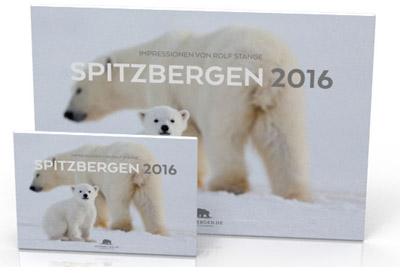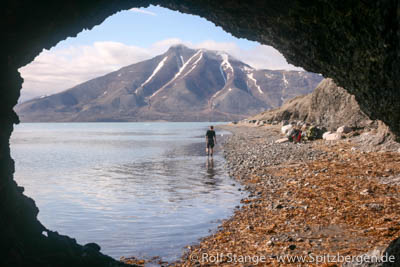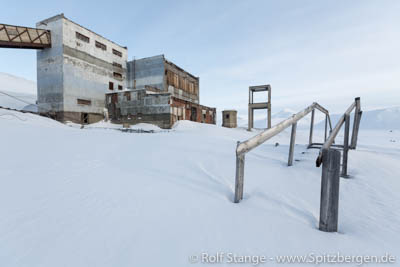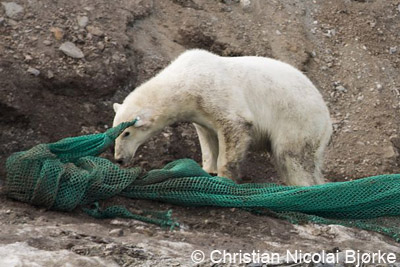-
current
recommendations- Liefdefjord
New page dedicated to one of Spitsbergen's most beautiful fjords. Background information and many photos.
- New Spitsbergen guidebook
The new edition of my Spitsbergen guidebook is out and available now!
- Liefdefjord
New page dedicated to one of Spitsbergen's most beautiful fjords. Background information and many photos.
Seitenstruktur
-
Spitsbergen-News
- Select Month
- April 2024
- March 2024
- February 2024
- January 2024
- December 2023
- November 2023
- October 2023
- September 2023
- August 2023
- July 2023
- June 2023
- May 2023
- April 2023
- March 2023
- February 2023
- January 2023
- December 2022
- November 2022
- October 2022
- September 2022
- August 2022
- July 2022
- June 2022
- May 2022
- April 2022
- March 2022
- February 2022
- January 2022
- December 2021
- November 2021
- October 2021
- September 2021
- August 2021
- July 2021
- June 2021
- May 2021
- April 2021
- March 2021
- February 2021
- January 2021
- December 2020
- November 2020
- October 2020
- September 2020
- August 2020
- July 2020
- June 2020
- May 2020
- April 2020
- March 2020
- February 2020
- January 2020
- December 2019
- November 2019
- October 2019
- September 2019
- August 2019
- July 2019
- June 2019
- May 2019
- April 2019
- March 2019
- February 2019
- January 2019
- December 2018
- November 2018
- October 2018
- September 2018
- August 2018
- July 2018
- June 2018
- May 2018
- April 2018
- March 2018
- February 2018
- January 2018
- December 2017
- November 2017
- October 2017
- September 2017
- August 2017
- July 2017
- June 2017
- May 2017
- April 2017
- March 2017
- February 2017
- January 2017
- December 2016
- November 2016
- October 2016
- September 2016
- August 2016
- July 2016
- June 2016
- May 2016
- April 2016
- March 2016
- February 2016
- January 2016
- December 2015
- November 2015
- October 2015
- September 2015
- August 2015
- July 2015
- June 2015
- May 2015
- April 2015
- March 2015
- February 2015
- January 2015
- December 2014
- November 2014
- October 2014
- September 2014
- August 2014
- July 2014
- June 2014
- May 2014
- April 2014
- March 2014
- February 2014
- January 2014
- December 2013
- November 2013
- October 2013
- September 2013
- August 2013
- July 2013
- June 2013
- May 2013
- April 2013
- March 2013
- February 2013
- January 2013
- December 2012
- November 2012
- October 2012
- September 2012
- August 2012
- July 2012
- June 2012
- May 2012
- April 2012
- March 2012
- February 2012
- January 2012
- December 2011
- November 2011
- October 2011
- September 2011
- August 2011
- May 2011
- April 2011
- March 2011
- February 2011
- January 2011
- December 2010
- November 2010
- September 2010
- August 2010
- July 2010
- June 2010
- May 2010
- April 2010
- March 2010
- February 2010
- November 2009
- October 2009
- August 2009
- July 2009
- June 2009
- May 2009
- April 2009
- March 2009
- February 2009
- January 2009
- December 2008
- November 2008
- October 2008
- August 2008
- July 2008
- June 2008
- May 2008
- April 2008
- March 2008
- February 2008
- April 2000
- Select Month
-
weather information

| THE Spitsbergen guidebook |
Home → August, 2015
Monthly Archives: August 2015 − News
Spitsbergen calendar 2016 available
The Spitsbergen calendar 2016 is available from now on in two sizes (A3 and A5). Twelve beautiful photos bring Spitsbergen’s scenery and wildlife throughout the arctic seasons onto your wall. Click here for further information about the new Spitsbergen calendar 2016.
Der Spitzbergen-Kalender 2016 ist ab sofort wie gewohnt in den Formaten A3 und A5 erhältlich. Zwölf schöne Fotos bringen Spitzbergens Landschaften und Tiere durch die Jahreszeiten auf die Wand. Der Spitzbergen-Kalender 2016 ist hier bestellbar.
The new Spitsbergen calendar 2016.
Mild summer in Spitsbergen
According to weather data of the Norwegian Meteorological Institute, the current summer month August is the warmest of its kind since the beginning of measurements in the 1970s at the airport near Longyearbyen. The normal average temperature in August is 4.8°C. The corresponding value for 2015 will be between 6.6 and 6.8°C (the final value is not yet available).
Longyearbyen has not had summer temperatures on this average level at least since the 1970s. And indeed, parts of August were real summer in Longyearbyen, with temperatures up to around 16°C in cases. People were enjoying the outside tables of the cafés and restaurants and their own homes.
Sometimes, the warm temperatures were more of a local character: while it was more than 16°C in Longyearbyen, it was pleasantly cool (4-5°C) at Kapp Lee on Edgeøya. Altogether, however, weather data from other stations (Ny Ålesund, Isfjord Radio, Barentsburg) indicate a very mild summer also elsewhere in the region.
Locals are more worried about warmer winters than warmer summers. The winter cold is important for the fjord ice. Also shrinking glaciers already make for very obvious changes in the landscape.
Summer weather in Isfjord.
Source: NRK
Smoldering fire at cultural heritage in Colesbukta
Almost two weeks ago a team of the Sysselmannen started extinguishing a subterranean fire in Colesbukta caused by a camp fire. The fire was ignited at the foundation of a historical building which is protected as a listed monument. In Colesbukta several buildings from the time between 1913 and 1962 are preserved. They served as a harbor where coal from the nearby Russian mining settlement Grumantbyen was loaded. Both settlements are cultural heritages.
On Tuesday 13th of August the Sysselmannen was informed by tourists about the fire in Colesbukta and a team was sent by helicopter. The original camp fire was already extinguished but it had initiated a smoldering fire under the ground which was about to spread. First the Sysselmannen´s team prevented the fire from spreading by digging a trench and the cultural heritage could be saved.
As now, almost two weeks later on Tuesday 25th of August the Sysselmannen and the fire department examined the place again, they noticed that the fire was still smoldering. The fire fighters tried to extinguish it with foam and now they think about using a several meters long hose for pumping water from the coast to the fire area.
As it is prohibited in Svalbard to make a fire close to cultural heritages, the Sysselmannen is investigating in this case. So far it is not known who made the camp fire. The Sysselmannen asks for information, preferably from the responsible persons themselves.
The old mining/harbour settlement Colesbukta in winter.
Source: Svalbardposten
Nordaustland circumnavigated by sea kayakers
The main island of Spitsbergen has been circumnavigated by sea kayakers already in 1990. But the second-largest island, Nordaustland, has so far withstood all attempts. Not that there have been a lot, but there were a few, which never really took off due to heavy ice conditions.
Next to difficult ice and weather conditions, it is the long ice cliff of the ice cap Austfonna on the east and south coast of Nordaustland, which makes any attempt to kayak this coast a very demanding venture. The calving glacier front is about 160 kilometres long and does not afford any opportunity to land for a rest or to sit out bad weather.
This summer, two groups have been successful with their attempts to circumnavigate Nordaustland. The Norwegian group “Nordaustland” reached Kinnvika on August 14, where they had started their kayaking expedition. A cruise ship provided safe and comfortable transportation from Longyearbyen to Kinnvika and back, the goal of the expedition was kayaking around Nordaustland and this has been achieved. Congratulations!
But “Nordaustland 2015” were not the first group. Just about one day before, a group of three kayakers, two from New Zealand and one from Norway, had completed their kayak-circumnavigation of Nordaustland successfully. Congratulations also to this group! But they have not yet completed their expedition, as it is their ambitious plan to circumnavigate the whole archipelago, from Longyearbyen to Longyearbyen. But they have done the largest step, Nordaustland, with impressive success.
Both groups met on the way, kept good contact and supported each other with information. “Nordaustland 2015” wrote in their blog “If we reckon that Nordaustlandet is 800 million years old, 24 hours difference is insignificant.” Only a quibbler would challenge this 🙂
Both groups have made an amazing achievement with years of preparation and training. The New Zealand-Norwegian group completed the 160 kilometer ice cliff coast within 40 hours without any major rests. Camping on Isisøyane (earlier called Isispynten) was not possible because of the presence of a number of polar bears. Vibebukta was the next place where putting up a tent was an option. Drift ice and fog slowed the trip down. Fridtjof Nansen, who in 1895 and 1896 made an incredible kajak adventure north of and within Franz Josef Land together with Hjalmar Johansen during his Fram Expedition, would be impressed.
Glacier front on the south coast of Nordaustland behind dense drift ice, July 2015.
Sources: Nordaustland 2015 (Facebook), Ice bears and Islands
Sysselmannen removes garbage from Svalbard´s beaches
This year an amount of 101 cubic meters of garbage was collected on the Sysselmannen´s annual cleanup cruise to remote beaches in Svalbard. The Sysselmannen´s ship ‘Polarsyssel’ was operating for eight days, approaching three places at the west- and the north coast of the main island Spitsbergen and two places in the northwest of the island Nordaustlandet. 24 volunteers supported the Sysselmannen´s crew in cleaning the single coastlines from garbage that was washed ashore.
It is most of all plastic garbage of different kind and size from all over the world which floats on the ocean´s surface, sometimes for years, and finally finds its way to the coast. And the bigger part derives from the fishing industry: fishnets, fishnet floats, ropes and so on. For animals the garbage can turn into a lethal trap, in the water as well as ashore. Seabirds for example swallow small pieces of plastic which they are not able to digest. They finally die by the accumulation of plastic pieces in their stomachs. Birds and other animals get entangled in ropes and fishnets. On this year´s campaign the Sysselmannen´s crew found a reindeer skeleton completely wrapped in a fishnet and in 2014 a polar bear was trailing a huge fishnet with its ear. The net got stuck at an earmark placed by scientists (see also Spitsbergen-Svalbard.com news Again polar bear caught in fishing net from August 2014).
With 101 cubic meters there was more garbage collected than last year (88 cubic meters). Yet, the Sysselmannen´s cleanup cruise was not as successful as expected. In the beginning the work was two times disturbed by polar bears showing up and later bad weather prevented the approach to highly polluted beaches. Special thanks go to the local population with its willingness to support the campaign. More than 200 locals volunteered for the cleanup and finally 24 were chosen to accompany the Sysselmannen´s crew.
Generally, the Sysselmannen can only cover a very small part of Svalbard´s coasts with this annual campaign, as for example this year there were only five beaches cleaned. Therefore smaller private expedition cruise ships are a significant help in this case, as most of them constantly arrange similar cleanups with their passengers (see also Spitsbergen-Svalbard.com news The Ocean Cleanup: solution for the global plastic pollution problem from June 2014).
Fishnet washed ashore
© Christian Nicolai Bjørke
Source: Sysselmannen, Svalbardposten
News-Listing live generated at 2024/April/18 at 11:14:54 Uhr (GMT+1)
































